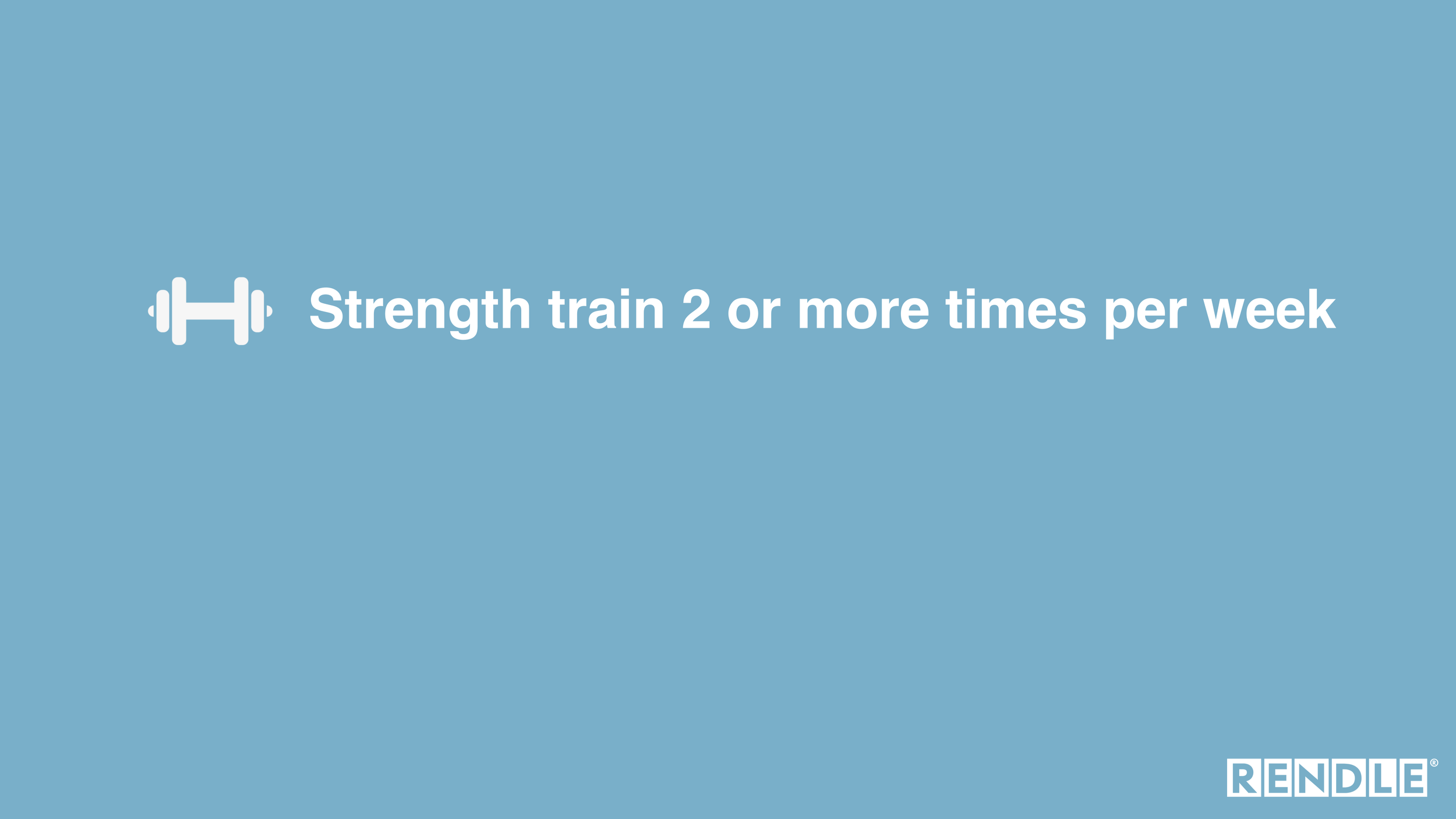How to make this happen in 6 steps:
💡 strength traiN 2 OR MORE times per week
(This video provides an overview of the 6 steps displayed on this page)
It’s important to understand how you can build healthy habits. Meeting and exceeding recommended exercise guidelines is essential for our health. If you have not exercised at all in the last three months make sure you get exercise clearance from your physician. Here are six steps to help you improve your strength training routine:
STEP 1: 🏆 VISUALIZE SUCCESS
Think about how great it would feel to be strong and energized. Everyday activities such as picking up a box, and walking up a couple of flights of stairs will all be easier. Think about some things or movements you’re currently not capable of. Then imagine yourself doing those things. Dream big when you envision your future.
STEP 2: 🚧 IDENTIFY YOUR OBSTACLES
The main obstacle people face is the belief they do not have the time to exercise. However, with good time management and prioritization, there should always be enough space in our schedules for strength training. There are also a number of misconceptions and myths around strength training which can act as barriers:
Misconception:
- Strength training needs to be done in a gym
- Strength training will make you look like a body-builder
- Strength training is just for athletes
Reality:
- Strength training can be done almost anywhere
- You will tone up, strengthen your muscles and lose body-fat more quickly
- Strength training is for everyone
None of these things are valid reasons to avoid strength training. Strength training is beneficial for everyone.
STEP 3: ✏️ HOW YOU CAN MODIFY YOUR EXISTING ROUTINE TO MAKE YOUR HABIT HAPPEN
Make a strategy that aligns with your objective, in this case, the objective is strength training 2 or more times per week. Plan your workouts in advance and mark the times down in your calendar. View your strength training session as you would any other important event such as a doctor’s appointment or a business meeting.
When you train, you want to focus on your large muscle groups:
On your front side, this means strengthening your:
- Quadriceps
- Chest (pectorals)
- Shoulders (anterior deltoids)
And on your back side you should train your:
- Hamstrings
- Glutes
- Back muscles (lats and trapezius)
- Posterior deltoids (to improve posture)
Working your large muscle groups helps you burn more fat while asleep and burn more calories over the subsequent 72 hours.
STEP 4: 👶🏼 START OUT SMALL, OR BETTER YET START OUT “VERY SMALL”
It's important not to try to do too much too soon. View your strength training routine as a marathon, not a sprint. Set realistic goals, ideally with the help of a certified trainer or coach. If you have never strength trained before, try starting with a light 15-minute session, 3 times a week and gradually building up the intensity and duration of your workouts. We mentioned in Step 1 that it’s important to dream big. But it’s the small steps that will get you there. You can achieve a lot by gradually building up the intensity and duration of your workouts.
STEP 5: ⏰ FIND A TRIGGER
Find a good “trigger” to kick off the new habit. A trigger is a cue that will serve as a reminder to perform the new habit. Test the trigger. A good trigger (or prompt) will help you follow the new routine. If you find you are forgetting to do the new habit, you need to identify a better trigger. Examples of a trigger:
After I have brushed my teeth, I will prepare my gym bag for tomorrow’s workout
When I have made my bed in the morning, I will do 15 body weight squats
After I drink my glass of water, I will do my morning push ups and planks
STEP 6: 🎈 CELEBRATE SUCCESS TO MAKE YOUR HABIT STICK
Celebrate success every single time you complete your new habit. It will help the habit stick. The celebration is a positive emotion. Our brains like the positive reinforcement and many celebrations over time make it more likely our new habits become part of our automatic behavior. Celebrations can vary from person to person, so find one that works for you. One great way to celebrate is to share your exercise stats on Strava or other social media. That way you and your friends can encourage each other. It will also help you track your progress. Other examples include:
💪 Tell yourself “good work” after you do your 10 push ups
🙂 Smile and give yourself a thumbs-up after you come home from the gym
What if you fall off the wagon?
Ideally, try to engage in strength training at least 2 times a week. If you have a week where it did not go as planned, don’t beat yourself up about it, just get back on track as soon as possible. Some habits may take a bit longer to stick, but if you feel you’re falling off the wagon quite frequently, then revisit these 6 steps.
Additional helpful resources: Tiny Habits, BJ Fogg, PhD
If you experience difficulties with implementing these 6 steps into your daily routine, or if you would like more information about habit formation, we encourage you to read “Tiny Habits” by BJ Fogg. BJ developed the Tiny Habits Method to help people build habits in a sustainable manner.




